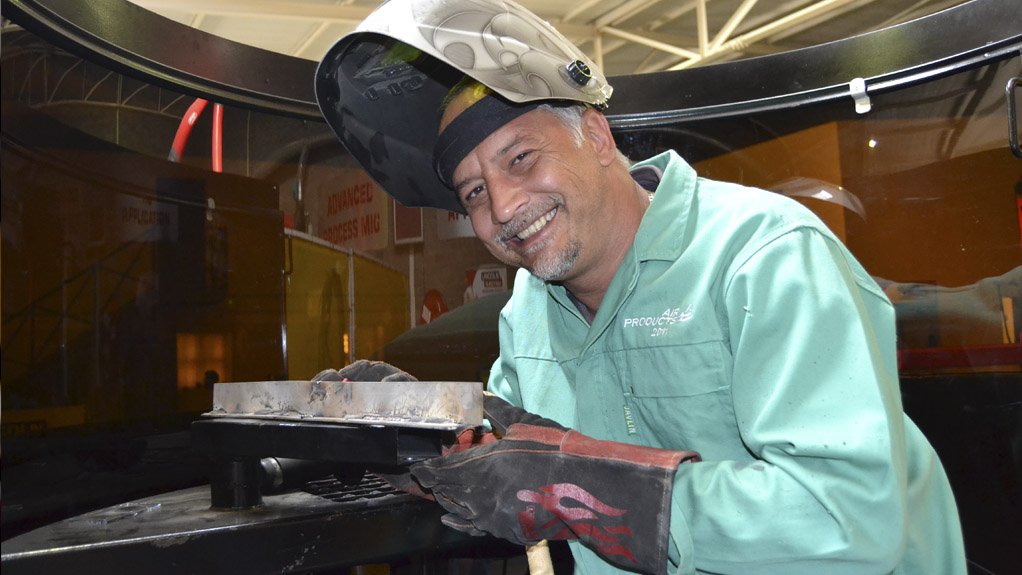Diverse gas equipment and services supplier Air Products South Africa has developed a customised welding cost calculator, which assists clients in making the right decision when choosing a gas mix for a weld.
Air Products welding specialist Sean Young maintains that the gas mix used on a weld can have a profound impact not only on the quality of the weld, but on its long-term cost-effectiveness as well. He further notes that, in the current economic climate, the trend for large manufacturing organisations is to consolidate work areas, which makes for more economical use. However, it is sometimes a challenge to forecast gas volumes and to calculate the most cost- effective long-term use, and thus the company developed a welding cost calculator to assist with this.
“The variety of welding procedures and their requisite shielding gases makes welding a complex and intricate process. In this highly specialised field, so critical to many manufacturing processes, it is important to know that you are getting the best advice. Sometimes it can take a bit of convincing that the cheapest option is not always the most cost-effective. But for a customer who is looking to make sensible long-term decisions, choosing the best gas mix for a specific procedure can save money and increase efficiencies in the long run,” says Young.
He explains that, as an active gas, carbon dioxide used to be the gas of choice, but notes that, while it can be effective for a faster and deeper weld – owing to the fact that it is quick freezing – it tends to cause spatter. Instead, Young advocates using a mixture of active and inert gases, which can reduce post-weld activity and result in a better weld in the long term.
Choosing a gas mix depends on the type and thickness of the metal being welded. Air Products supplies argon for tungsten inert gas welding of aluminium, copper, mild steel and stainless steel, and an argon mix for thicker aluminium or copper.
Young recommends using three-part gas mixes for metal active gas (MAG) welding of mild steel. The company’s most sought after gas mixes for this process are its premium brands Cooger-Plus, Magmix 3 and Cooger 84/82.
“When it comes to MAG welding of stainless steel, specific gas mixes come into the picture. For example, an argon and carbon dioxide mix is recommended for the welding of a 3cr12 grade of stainless steel. Pure carbon dioxide is not recommended, as carbon precipitation can cause cracking,” Young explains.
For MAG, the welding of aluminium argon is recommended, and a mix of argon and helium for thicker aluminium is advised. Flux core welding of stainless steel and mild steel requires a filler material, which, in turn, determines the specific welding gas mix.
“The choice of welding gas or gas mixes depends on customer requirements, metal properties, and in certain cases, precise specifications. Mechanical construction, pressure vessels, and civil construction such as bridges, and the use of critical components, for example, all require a specific welding procedure, which determines the welding gas type,” says Young.
“At Air Products, we are passionate about providing a service which goes far beyond the supply of a product. We provide a close analysis of specific requirements and match those with recommendations on the correct welding procedure, shielding gases and filler material,” he concludes
.
Edited by: Zandile Mavuso
Creamer Media Senior Deputy Editor: Features
EMAIL THIS ARTICLE SAVE THIS ARTICLE
To subscribe email subscriptions@creamermedia.co.za or click here
To advertise email advertising@creamermedia.co.za or click here













